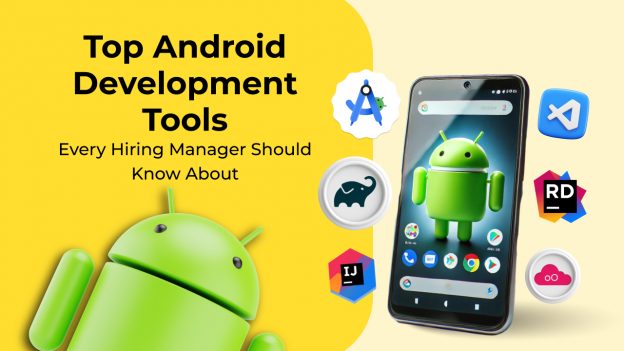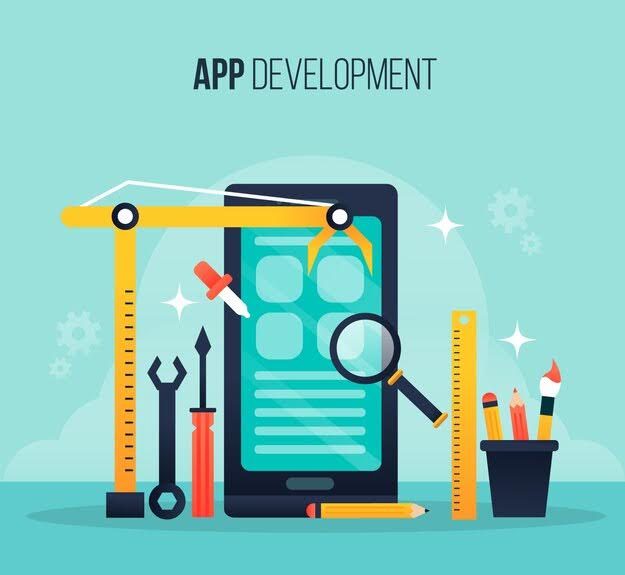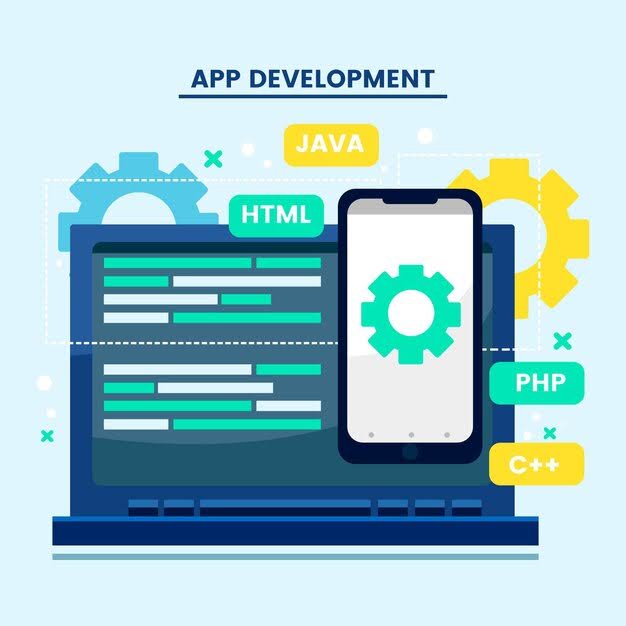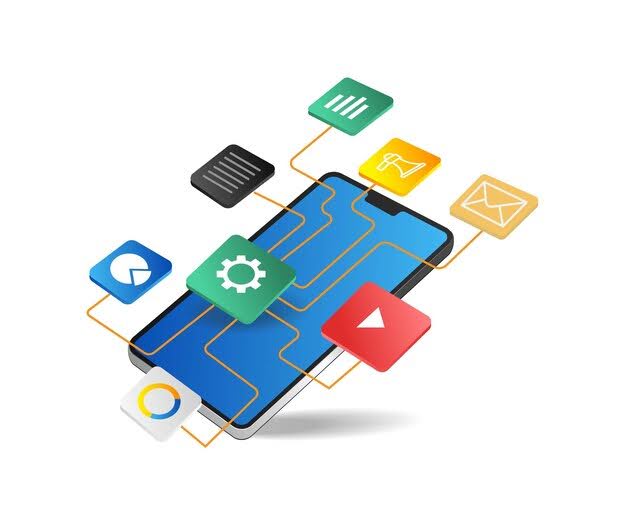Integrating ads in Android apps can take a lot of work for developers. If not done well, it often leads to lags and a frustrating user experience.
Mobile traffic dominates with 66.88% compared to desktops at 31.42%. This means that optimizing ad integration is more critical than ever for app success.
Imagine launching an app only to find that ads are ruining the user experience or not making any money. This article will show you how Android developers can add ads effectively. You’ll learn simple tips to integrate ads in Android apps and keep your users happy.
Understanding Ad Integration
Integrating ads in an Android app means knowing how to incorporate ads into digital content without disrupting the user experience. This is key to keeping your audience engaged and satisfied while making money from ads.
Types of Ads
There are different types of ads to consider, each with its advantages:

1. Banner Ads
Banner ads are the classic rectangular ads at the top or bottom of websites or apps. They’re simple and usually contain basic images or text. While they are not as engaging as other types of ads, they are effective for broad visibility and brand awareness.
2. Interstitial Ads
Interstitial advertising involves full-screen adverts that appear during natural transitions, such as between game levels or when using an app. Since they take up the entire screen, they attract full attention. However, they can be invasive if not timed correctly, so use them cautiously.
3. Native Ads
Native advertisements integrate nicely with the information surrounding them, making them less obtrusive. They appear and feel like part of the app or website and are frequently presented as sponsored articles or suggested content. This makes them more attractive, potentially leading to better user involvement rates.
4. Rewarded Video Ads
Rewarded ads offer users incentives, such as in-game currency, extra lives, or premium content, in exchange for engaging with the advertisement. This type of ad creates a value exchange that benefits both the advertiser and the user. Rewarded ads have high engagement rates and can enhance user experience by providing tangible rewards.
Popular Ad Networks
Google AdMob is popular with app developers for its easy integration and robust analytics. It offers various ad formats, making it versatile for different apps. Facebook Audience Network uses Facebook’s vast user data for targeted ads, ideal for apps with a social aspect.
Game developers favor Unity Ads for its seamless integration with the Unity engine. It focuses on less intrusive, reward-based video ads, which enhance user experience. Other popular networks include AdColony and Chartboost, each offering unique features to maximize revenue.
Role of an Android Developer in Ad Integration
An Android developer is critical to integrating ads in Android apps. They ensure ads are added without disrupting the user experience. This involves working closely with ad networks and implementing their SDKs.

Expertise in Ad SDKs and Libraries
Different ad networks have their unique SDKs (Software Development Kits). An Android developer knows the details of these SDKs, ensuring smooth integration and optimal performance in your app.
They also need to understand different ad platforms like Google AdMob and Facebook Audience Network. This expertise helps them integrate ads in Android apps and troubleshoot any issues.
Customizing Ad Placements for Optimal User Experience
Customizing ad placements is essential for a great user experience. An Android developer strategically places ads in Android apps to maximize revenue while minimizing disruption. This can involve A/B testing different placements and formats to find the best balance between user engagement and ad performance.
Technical Aspects of Ad Integration
Here’s a closer look at the technical aspects of ad integration that your Android developer handles:
Setting Up Ad Network SDKs
The first step in integrating ads in Android apps is setting up ad network SDKs. Developers choose an ad network like AdMob or Facebook Audience Network and follow their documentation to install the SDK. This usually involves adding dependencies to your project and configuring app settings.
Implementing Ad Units
Implementing ad units involves deciding where and how ads in Android apps will appear. Developers choose from various ad formats like banners, interstitials, or rewarded videos. They then place ad units strategically to maximize visibility without disrupting the user experience.
Handling Ad Events and User Interactions
Handling ad events and user interactions is crucial for a smooth user experience. Android developers can manage events such as ad loading, ad clicks, and ad closures. Additionally, they also code event listeners that respond to these actions. For instance, pause gameplay during an interstitial ad.
Monitoring these events helps optimize ad performance and user engagement. This ensures your app remains user-friendly while generating revenue.
Best Practices for Ad Integration
A skilled Android developer will follow these best practices to integrate ads in Android apps:
- Ads in Android apps should keep your app running smoothly and maintain user flow. Developers find the right balance between ad frequency and user experience.
- Developers strategize ad placement and frequency to ensure they’re relevant and appear at natural breaks in the app flow.
- Each ad network has policies regarding ad content and placement. Developers should ensure their apps adhere to these policies to avoid account suspension or revenue loss.
Challenges in Ad Integration
Ad integration, if done correctly, can help you earn money while providing a rich user experience. However, there are a few challenges developers may face that can hinder this experience.
Common Issues and Debugging
It is essential to ensure that ads load smoothly without slowing down your app or website. Furthermore, it’s important to check that the ads are optimized to be compatible with various devices.
Broken ad placements and latency are frequent issues. Use network debugging tools to monitor your ad requests and responses. Check for console errors and ensure your SDKs are up-to-date. Regularly test in different environments to catch issues early.
Avoiding Ad Fraud and Ensuring Security
Ad fraud prevention and security are crucial. Implement fraud detection tools to spot fake clicks and impressions. Use secure frameworks and always verify the sources of your ads. Regular audits and updates to your security protocols will keep your ad spaces clean and trustworthy.
Benefits of Hiring an Experienced Android Developer
Here’s why partnering with an experienced Android developer is a smart move:
- An Android developer’s expertise simplifies the ad integration process, allowing your app to start generating revenue faster.
- Developers know how to integrate ads in an Android app and optimize ad placement, targeting, and network selection to maximize revenue.
- Developers stay updated and handle ongoing maintenance to ensure your ads continue to function smoothly.
How to Hire an Android Developer?
Hiring a remote Android developer from India can streamline your app development process. The talent pool is vast, and the cost is significantly lower than in Western countries. You can find skilled developers experienced in the latest technologies and frameworks. Plus, working across different time zones means quicker turnarounds.
Why Choose Uplers?
Uplers helps to hire Android developers from India easily. They pre-vet candidates, ensuring you get only the best talent. You don’t have to worry about administrative hassles; Uplers handles everything. This allows you to focus on your project while they manage the details.
Here are some more benefits of Uplers:
- Uplers offers a smooth hiring process with a dedicated account manager to assist you.
- Their developers are skilled, reliable, and ready to start immediately.
- Uplers’ flexible engagement models let you scale your team up or down as needed. This makes it a smart choice for dynamic projects.
Wrapping Up
We’ve discussed the importance of integrating ads in Android apps extensively. It can boost revenue and enhance user experience, making it a critical component for any app aiming for success.
We reviewed several ways to integrate ads in an Android app, including banners, interstitials, and rewarded videos. Furthermore, we discussed how selecting the correct ad network might affect your app’s performance and revenue.
If you want to maximize your app’s potential, you need to hire Android developers who know how to integrate ads into Android apps. Contact Uplers immediately, and let our skilled developers help your app reach its maximum earning potential!















